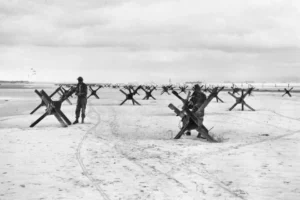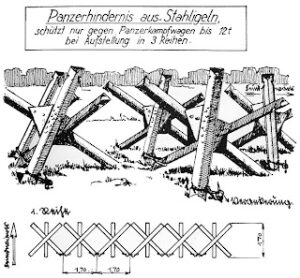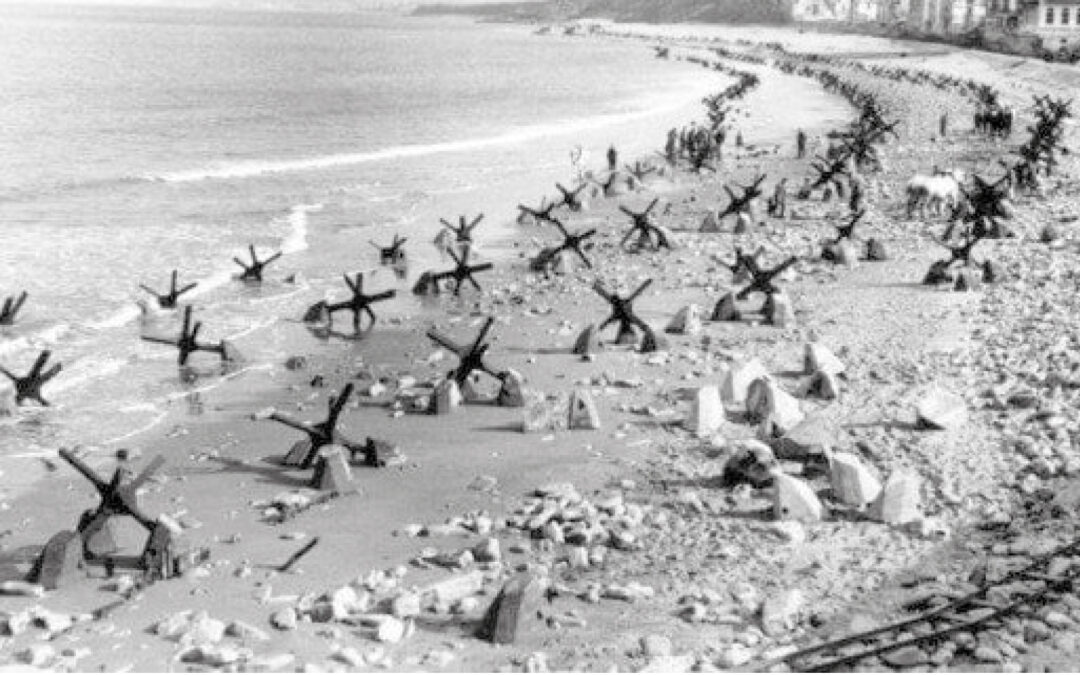In today’s #ForgottenFriday we are adventuring into the history of the Metal Hedgehog. Yes… The Metal Hedgehog!
Summer O’Brien recalls: “As a child and teenager, I always recognised these types of beach defences on documentaries, movies, and some in places I visited in Europe. However, the history of the Metal Hedgehog really caught my attention because of its uniqueness…”

In June 1944 on a beach in Normandy, Royal Marine commandos prepare to demolish Czech hedgehogs designed to prevent an Allied forces landing.
Background
Although the Metal Hedgehog has an array of names – the actual design came from Czechoslovakia. The Czech Hedgehog is a static anti-tank obstacle defence made of metal angle beams or I-beams. It was very effective in keeping light to medium tanks and vehicles from penetrating a line of defence; it maintained its function even when tipped over by a nearby explosion. Although Czech Hedgehogs may have provided some scant cover for attacking infantry, infantry forces are generally much less effective against fortified defensive positions than mechanised units.
Pre-WW2
During the Second World War, The Czech Hedgehog, was placed in the Czechoslovak Border Fortifications (1935-1938). Although never completed, the fortification was then turned over to Germany in 1938 after the occupation of the Sudetenland because of the Munich Agreement.
The first hedgehogs were built of reinforced concrete, with a shape like later metal versions. However, the concrete hedgehogs proved ineffective during tests as they could be substantially damaged by machine-gun fire. Once they were fragmented, the debris provided more cover for the enemy infantry than did their metal counterparts. Therefore, only the oldest sections of the Czechoslovak defensive line, built in 1935–1936, were equipped with concrete hedgehogs, and usually only in the second line.

German Design
The design was quickly adopted by Germany and in 1941, the Soviet Union used hedgehogs heavily to stop the German tank onslaught. One of the most famous uses of the hedgehog was in the Atlantic Wall in Normandy, France. During the Normandy Breakout, some allied tanks even strapped modified hedgehogs to the front of their vehicles to cut through the thick hedgerows making up a substantial portion of the French Bocage countryside, how different is that!
The Hedgehog was a simple but effective design in range of defences in the Second World War and are still in use today as a form of fortification and defence across the globe.

To learn more about this type of defence – visit this bibliography for more:
Short, Neil. Germany’s East Wall in World War II. United Kingdom: Bloomsbury Publishing, 2015.
Taylor, Robert A.. World War II in Fort Pierce. United States: Arcadia Publishing Incorporated, 1999.
Cunningham, Chet. The Frogmen of World War II: An Oral History of the U.S. Navy’s Underwater Demolition Teams. United Kingdom: Pocket Books, 2007.
Walling, Michael G.. Bloodstained Sands: U.S. Amphibious Operations in World War II. United Kingdom: Bloomsbury Publishing, 2017.


